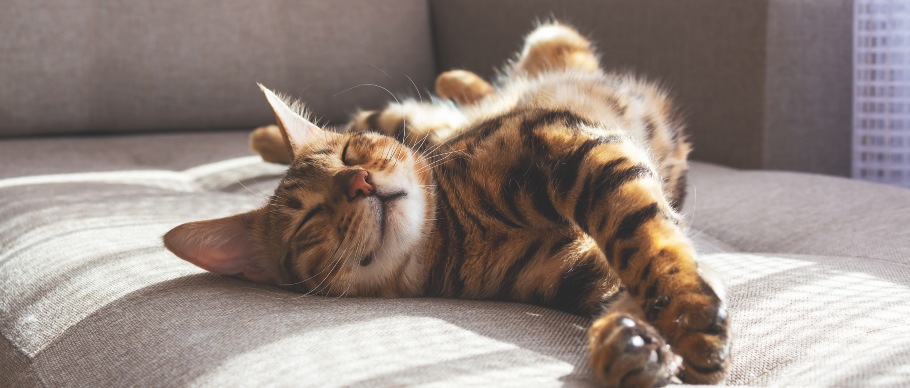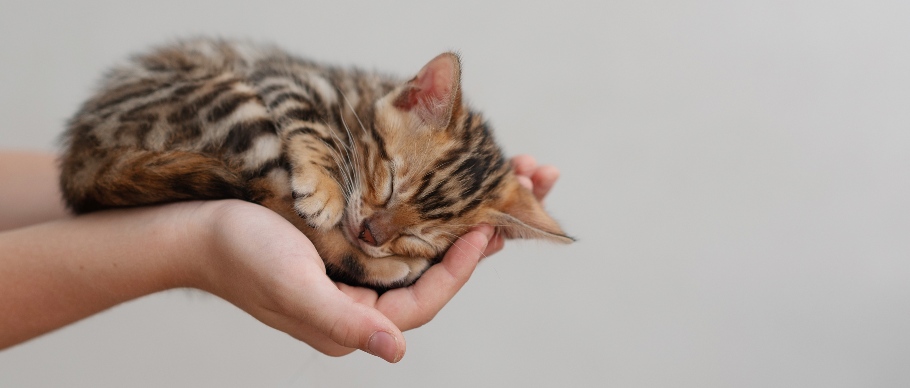When Do Cats Stop Growing? What To Expect Over The Years
Have you recently welcomed a sweet feline friend into your home? It’s never too soon to familiarize yourself with the typical cat growth stages! More specifically, it’s good to know how big your new kitty will grow. However, exactly when your cat will reach full maturity depends on a few factors.
So, When Do Cats Stop Growing?
There are many ways to tell when cats stop growing. On average, most cats are considered fully grown when they are between 12 to 18 months old. Female cats are typically finished growing between 10 to 12 months while males can keep growing for up to 18 months.
Even though this is considered a widely accepted average, numbers can vary due to many different factors including breed type, diet, and even exercise.
For example, kittens of large cat breeds, such as the Ocicat or the Maine Coon, can continue to grow up to two years old while some small cat breeds stay little, like the Cornish Rex or Siamese. According to Colorado State University, spaying or neutering your cat can also slightly affect their growth.
How to Tell If a Cat Has Stopped Growing
If your kitty has maintained the same height, weight, and length on a consistent diet and exercise routine for at least several months, it’s fair to assume your cat is fully grown. If you’d like a more solid answer, your vet can help! By X-raying your kitty’s joints and bones, your vet can check for signs of continued or completed growth.
If you’re curious as to how big your kitten can potentially get, there’s a neat trick you can try! If you have the adult size and weight of their parents, you can average those numbers to get a rough idea of your cat’s eventual size.
Size and weight are also influenced by a kitten’s diet and exercise. All cats are unique, and their routines should reflect that. If you’re having trouble finding a balance that suits your cat’s needs, your vet can help you monitor their health and size if you have any concerns.
How Will Your Cat’s Routine Change in Adulthood?
Knowing when cats are fully grown is important for their health, as caring for an adult cat is much different than caring for a kitten. These are some of the biggest ways your furry friend’s routine evolves as they enter adulthood.
Dietary changes – The amount of protein, amino acids, and minerals your cat needs changes as they grow from kitten to adult. Talk to your veterinarian about when to switch your feline’s food and which formula would be best for them.
Differences in veterinary and dental care – Young kittens should see the vet multiple times per year, but once they’ve reached at least one year old, they typically only need to go for their annual wellness exam (unless they have a specific medical need). Senior cats also may become more susceptible to oral diseases, so your veterinarian may recommend professional teeth cleanings as your cat grows older.
🐾 Related: Cat Care 101: 8 Tips for A Happy and Healthy Kitty
Changes in energy levels – Growing kittens are little bundles of energy, excited to play and explore their new environments. As they get older, they may experience a slight decrease in energy and grow comfortable in their daily routines. Despite the change, they still require regular exercise, though!
Less supervision needed – Kittens are cute and cuddly, but they’re also very active! As they grow up and calm down, you can leave them unsupervised for longer periods. For example, kittens five to six months old can generally be left alone for up to six hours, but adult cats can usually spend up to 12 hours alone. Of course, if you’re planning to be away longer, ensure you arrange for a visitor to feed and play with your furry friend.
All Grown Up
Staying informed about your cat’s health and knowing when cats are fully grown will help you prepare for all the cat growth stages. Growing kitties can require lots of time, but with a little work and a lot of patience, watching your kitten grow up will be a gift for you and your entire family.










